Baby Animals
Using cute baby animal illustrations that will appeal to young children, this set of stamps seeks to promote positive social values among the young ones. The illustrations featuring baby animals also put a childlike angle to real world and social issues that also help children to understand them better. We hope you enjoy the childlikeness of this set of stamps and this lovely stamp issue will add new cheer to your collection.
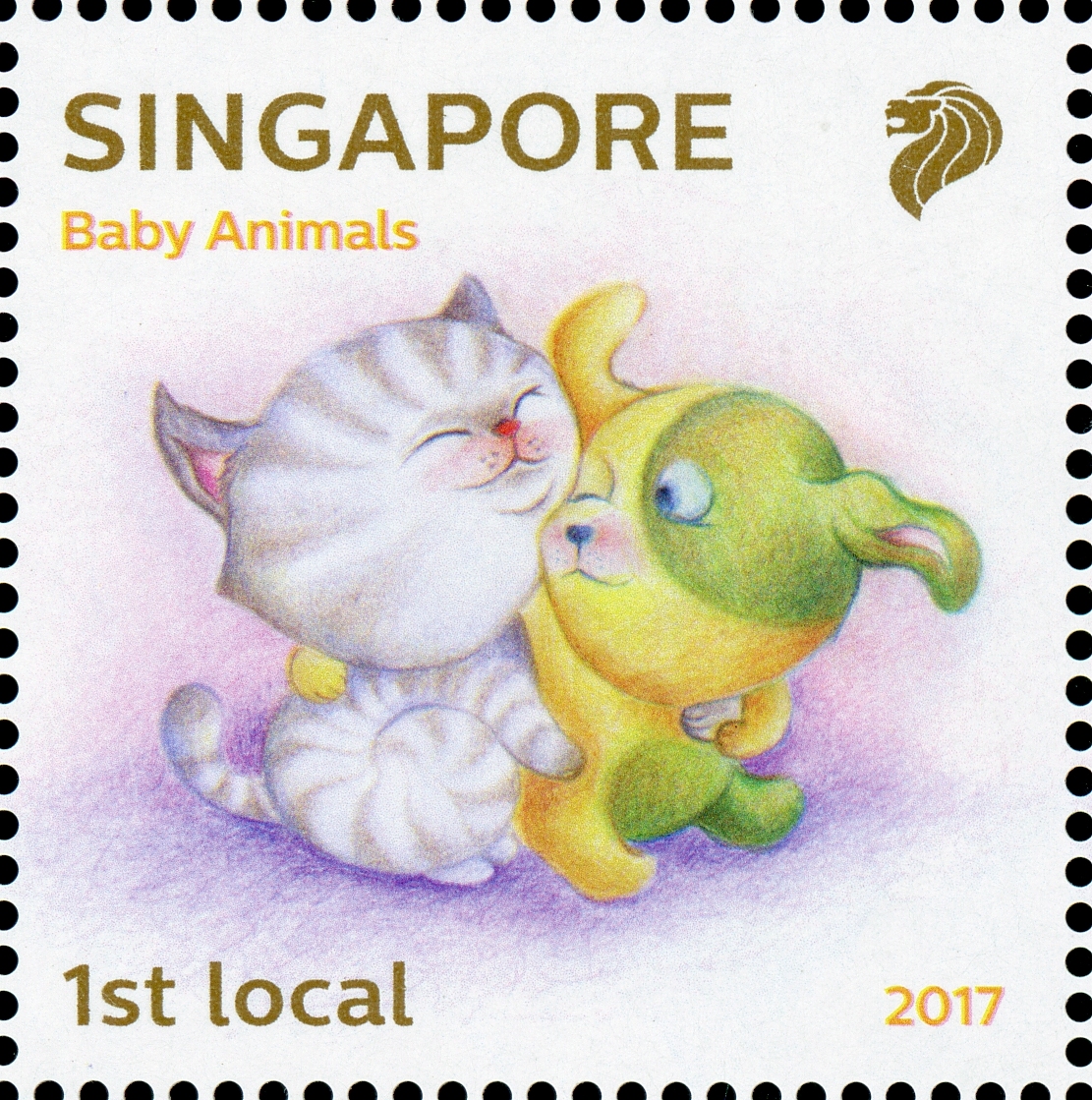
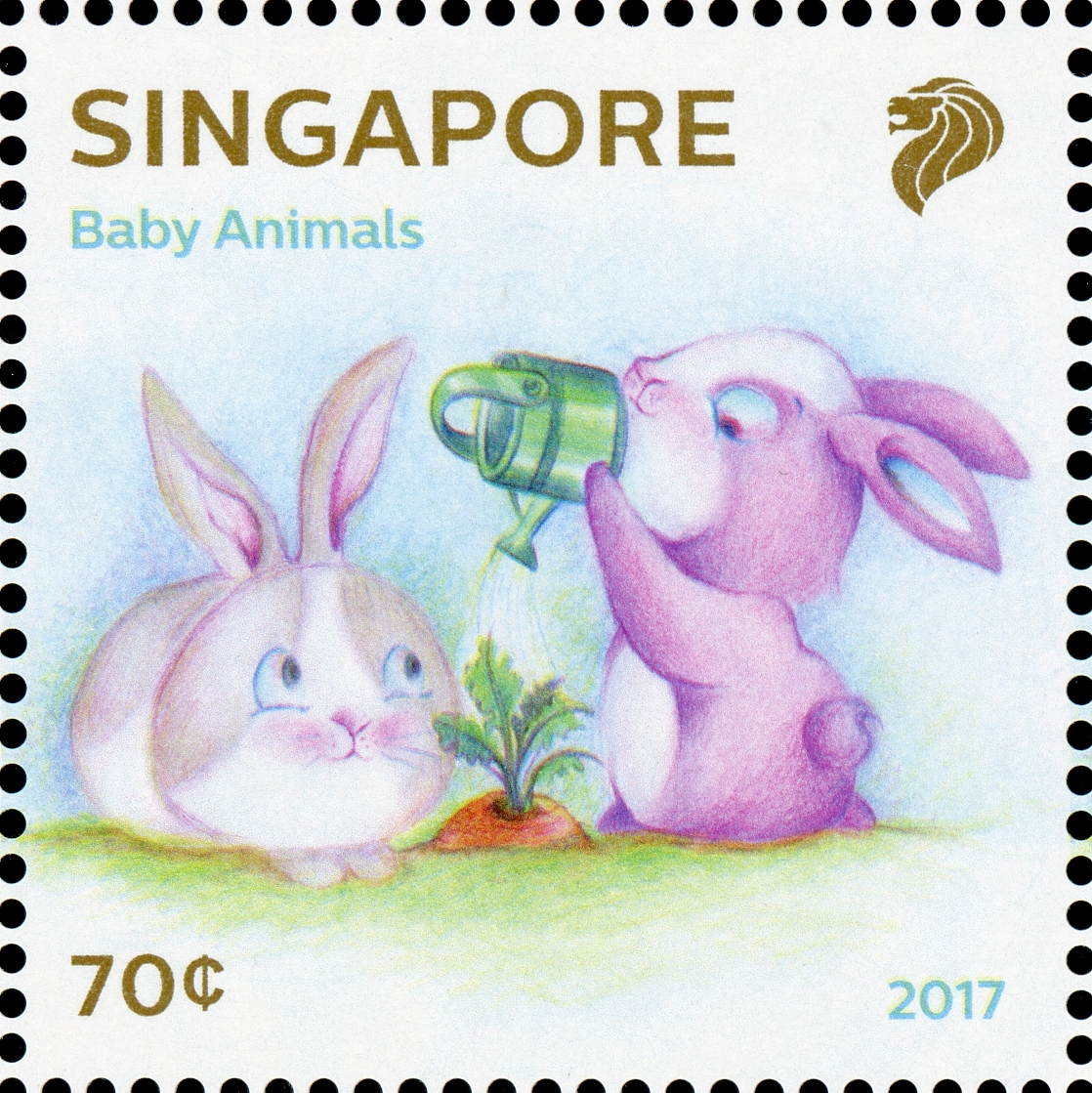
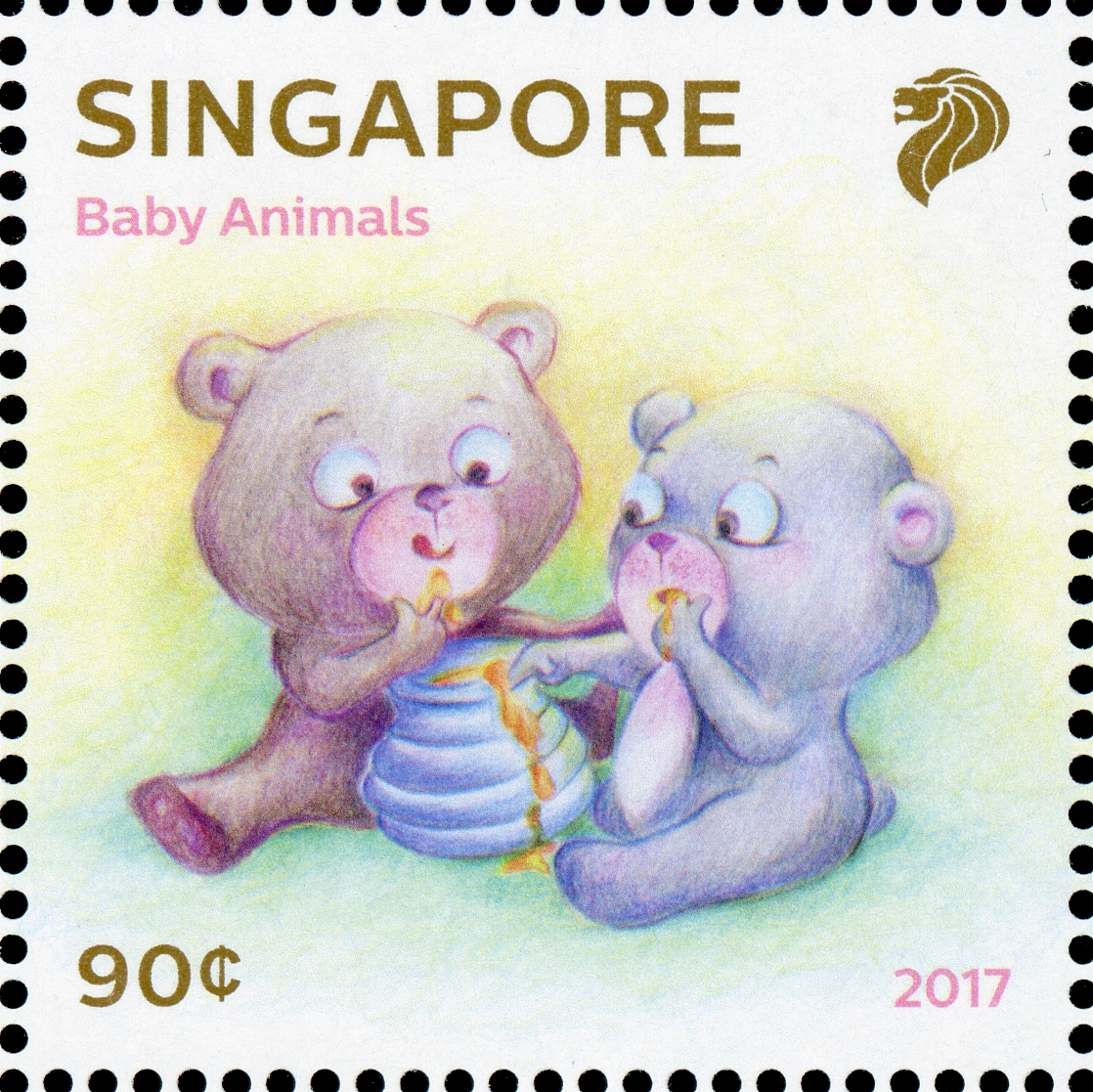
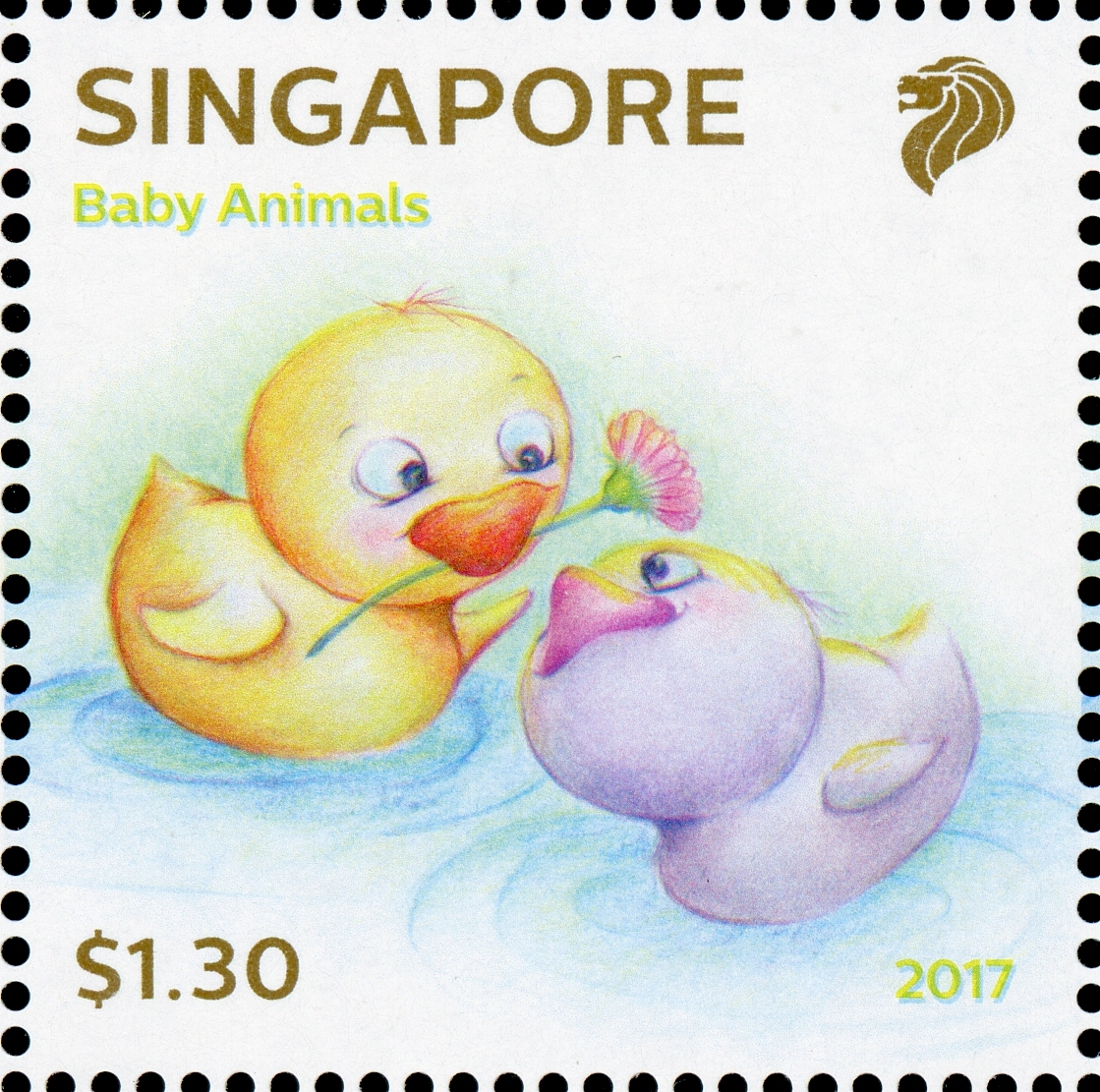
1st Local Stamp: Depicts a cat affectionately hugging a dog, two animals often at odds. This stamp promotes friendliness and love, teaching children to appreciate and understand those who are different from them.
70¢ Stamp: Shows two rabbits watering the earth together. This stamp highlights the importance of eco-consciousness, emphasizing that environmental responsibility requires community effort.
90¢ Stamp: Features two bears with different fur colors sharing a pot of honey. It represents sharing and inclusiveness, a key value in Singapore's multi-racial society. The stamp helps foster racial harmony by teaching children to be inclusive from a young age.
$1.30 Stamp: The $1.30 stamp shows a duck giving a flower to his friend to show kindness and graciousness. To build a gracious and caring society, our children need to appreciate the value of giving and being kind to the people around them.
Critically Endangered Flora of Singapore - Flora of Lowland Dipterocarp Forests
Despite a history of significant forest loss, Singapore's biodiversity has shown remarkable resilience, with over 500 new plant and animal species discovered or rediscovered in the last decade. The National Parks Board (NParks) is actively working to transform Singapore into a City in Nature to protect these vulnerable species. As part of the Nature Conservation Master Plan, the Species Recovery Programme collects and propagates seeds from 82 rare and endangered plants. These plants are then reintroduced to various locations to increase their chances of long-term survival. The four critically endangered species featured on this stamp issue were all found in lowland dipterocarp forests.
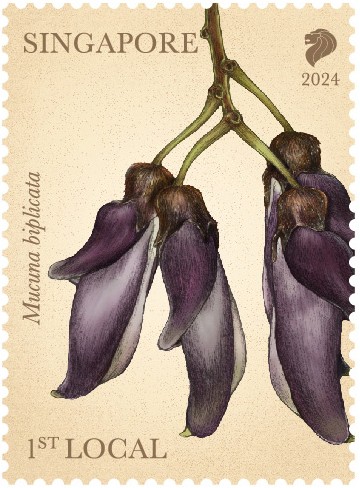
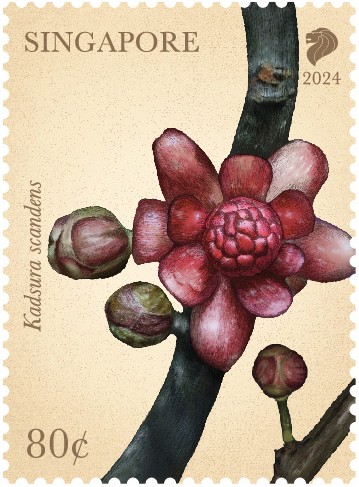
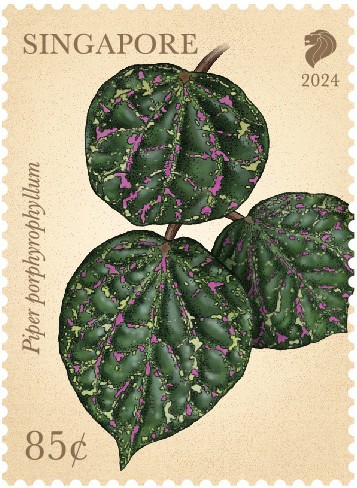
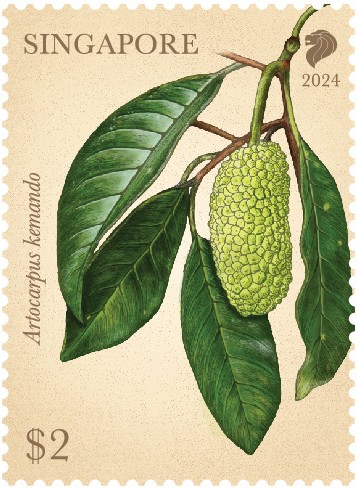
1st Local Stamp:Mucuna biplicata is a beautiful climber from the bean family, Fabaceae. It produces resplendent deep purple flowers which give rise to seed pods that ripen from red to dark brown. The light brown seeds are likely water dispersed. It was a new species record for Singapore in 2022, only found in a single locality in the western part of Singapore.
Visit the NParks Flora & Fauna Web to learn more about Mucuna biplicata!
80¢ Stamp:Kadsura scandens is a woody liana that can only be found in Bukit Timah Nature Reserve and Central Catchment Nature Reserve. This liana produces glossy green leaves that are brilliant red in colour when young. The fruits are little berries that ripen from green to yellow with a faint apple-like scent which are likely to be dispersed by mammals in Singapore. The seeds are bright yellow and resemble mung beans.
Visit the NParks Flora & Fauna Web to learn more about Kadsura scandens!
85¢ Stamp:Piper porphyrophyllum, commonly known as the Tiger’s Betel, is one of the most beautiful and ornamental wild pepper species in Singapore. This ornamental climber has dark green leaves with white and pink veination and purplish red undersides. In the wild, it can be found trailing in the shady understory of the forest floor as well as climbing up small forest trees.
Visit the NParks Flora & Fauna Web to learn more about Piper porphyrophyllum!
$2 Stamp:Artocarpus kemando, commonly known as the Squirrel’s Jack, belongs to the same family as the common Jackfruit that we are familiar with. However, the mammal-dispersed fruits of Artocarpus kemando are small and measure only about 4.5 cm in length. The tree can be found in the Central Catchment Nature Reserve, measuring up to 35 m tall.
Visit the NParks Flora & Fauna Web to learn more about Artocarpus kemando!
Kingfishers
Kingfishers are a group of small to medium-sized, bright-looking birds in the order Coraciiformes. They fly rapidly, low over water, and hunt fish from riverside perches, occasionally hovering above the water's surface. Their feathers are often bright colours, such as blue or orange. Generally, kingfishers have large heads, long, sharp bills, short legs, and stubby tails. Illustrated in this stamp issue are 4 species of kingfishers found in Singapore – Black-capped kingfisher, Blue-eared kingfisher, Black-backed kingfisher and White-throated kingfisher.
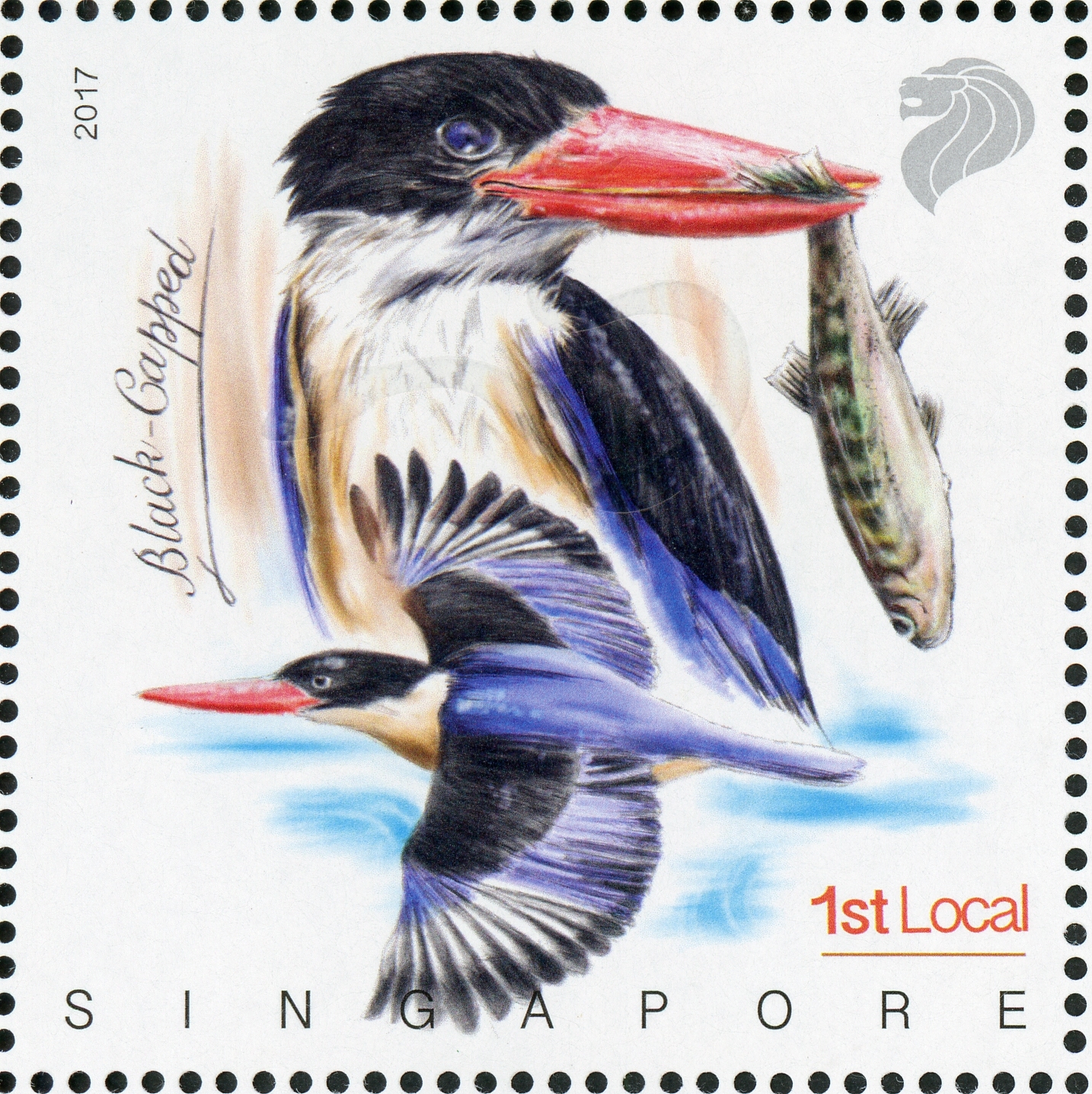
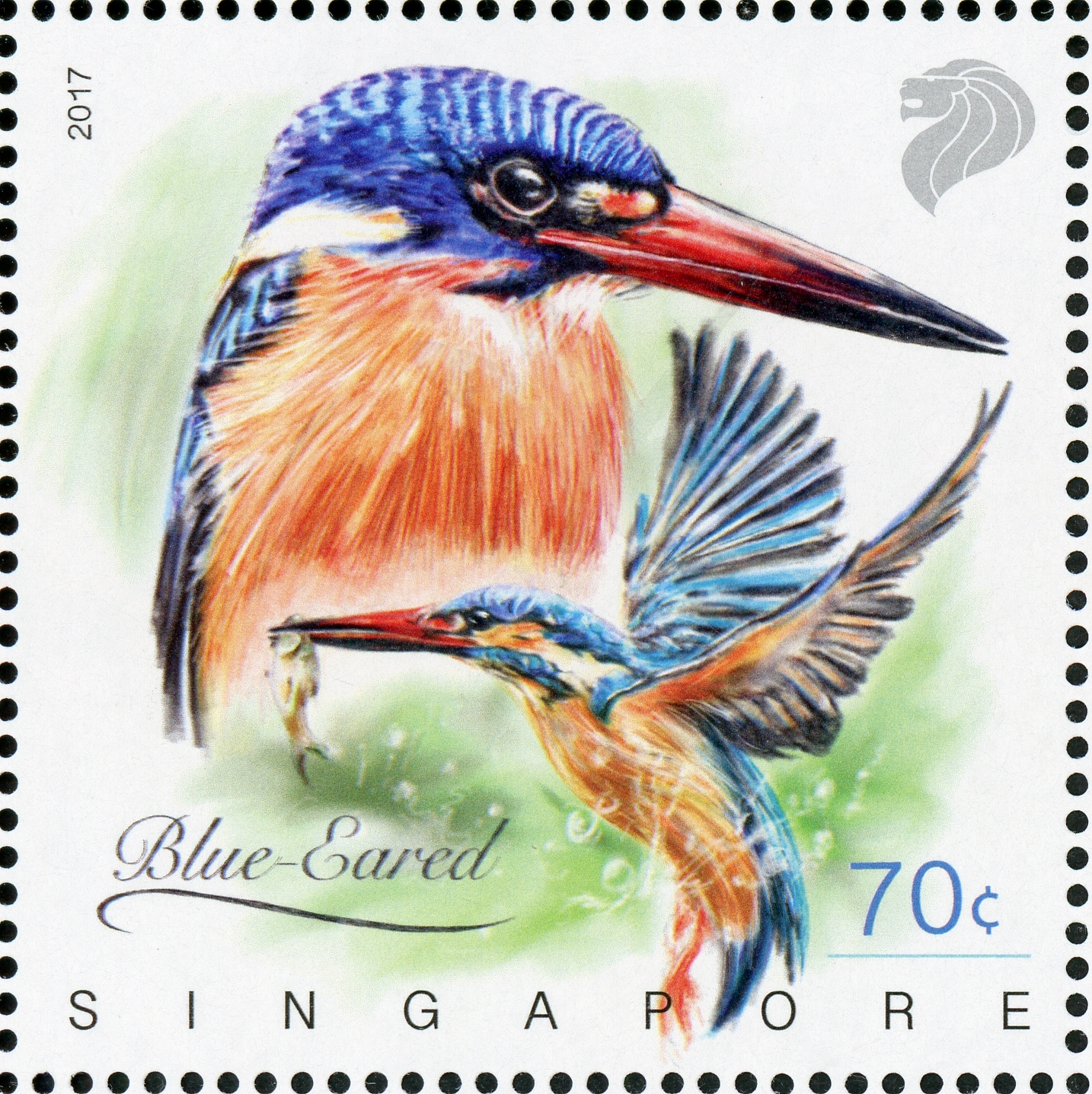
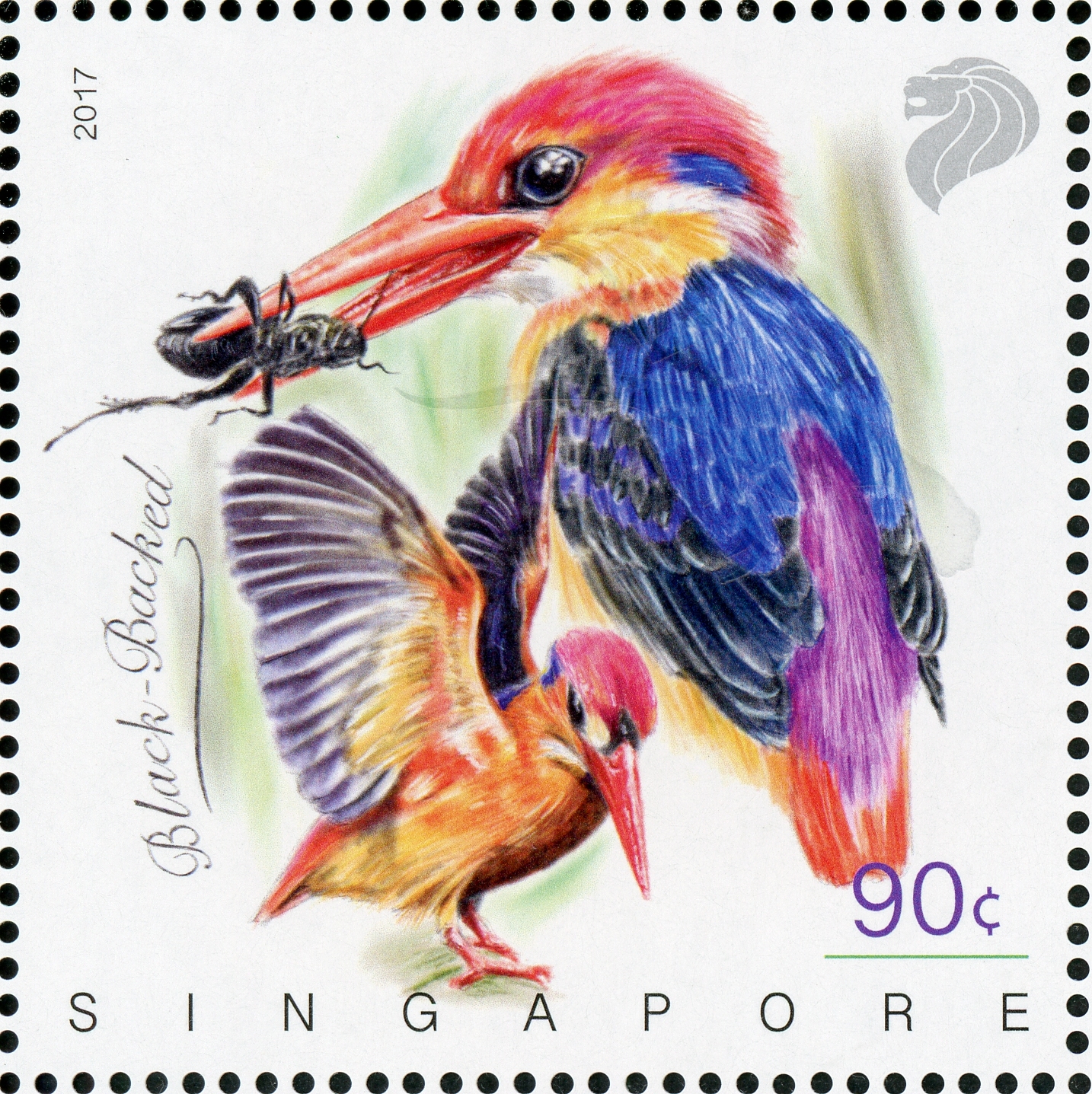
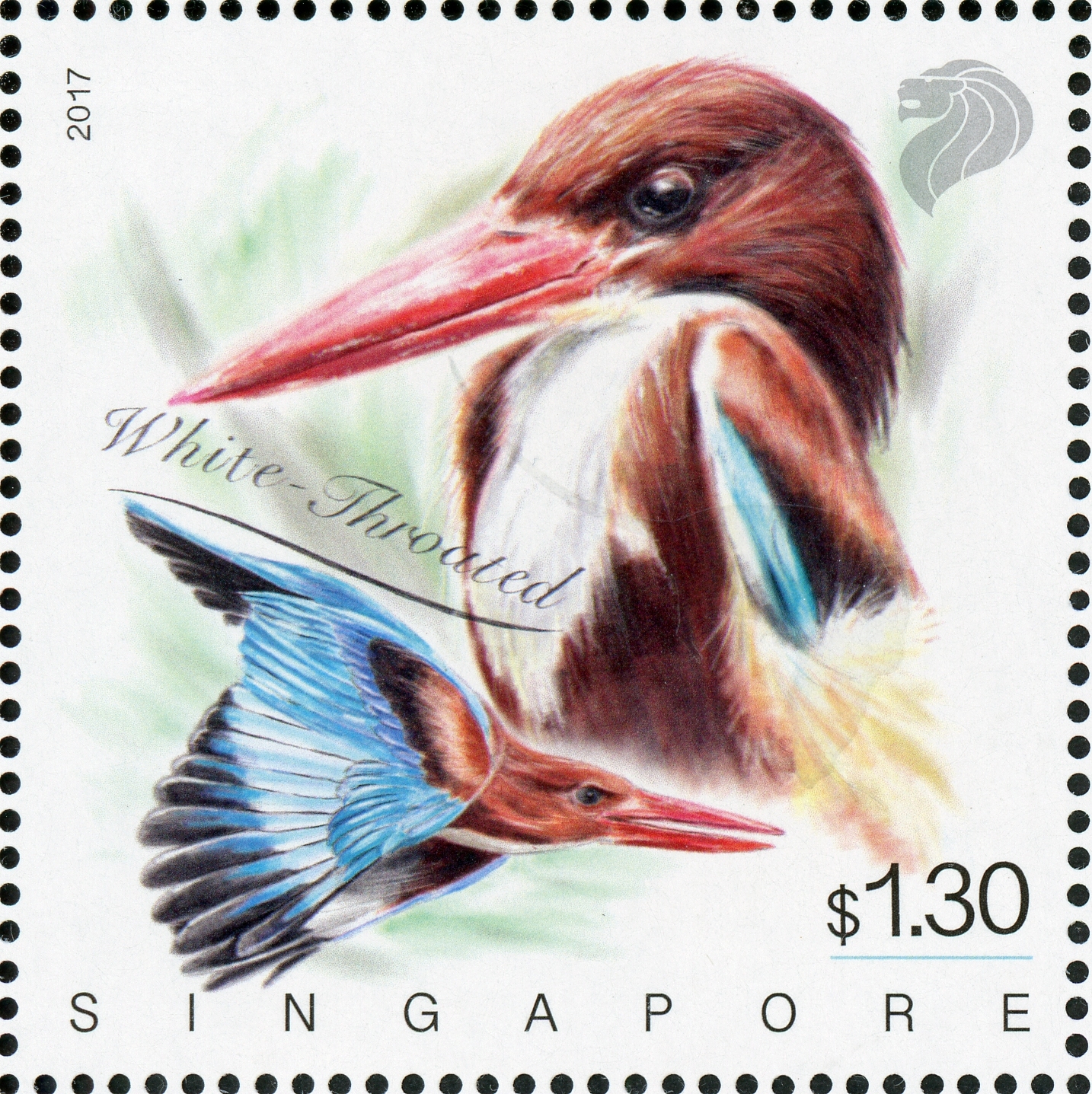
1st Local Stamp: The Black-capped kingfisher is a medium-sized kingfisher that is difficult to mistake for any other species over its wide range. Black-capped kingfishers are widely distributed in tropical Asia from India east to China, Korea and Southeast Asia, and are mainly found in coastal and mangrove habitats. They fly out to catch an insect in foliage or on the ground, but can also take prey from the water. Black-capped kingfishers will nest at the end of the tunnel dug by both sexes in earth mound. The female species will lay a clutch of 4–5 eggs that will take 20–22 days to hatch, while the chicks fledge in about 19 days.
70¢ Stamp: The Blue-eared kingfisher is commonly found in the Indian subcontinent and Southeast Asia, and it is one of the smallest kingfishers found in Singapore. Blue-eared kingfishers are found mainly in dense shaded forests where they hunt in small streams. Adult males have an all dark bill while females have a reddish lower mandible. Blue-eared kingfisher perch near water to search for fish, crustaceans, and insects; dives vertically into water and return to perch with the catch. When hunting fish, they struck them on the perch before swallowing head first.
90¢ Stamp: Also known as the Oriental dwarf kingfisher, it is endemic across much of the Indian subcontinent and Southeast Asia, and with only 14 cm in length, the smallest of the eight kingfishers found in Singapore. They prefer small streams in densely shaded forests and prey on insects, spiders, crabs, fishes and frogs, geckos, skinks and lizards. Black-backed kingfisher perch low in vegetation or on rocks; fly out to take prey from the ground or from among foliage. They nest in horizontal tunnel up to a metre in length excavated in earth banks.
$1.30 Stamp: White-throated kingfisher is a large kingfisher widespread distributed from Turkey east through the Indian subcontinent to the Philippines. White-throated kingfishers are probably the most common kingfisher found in Singapore. They perch conspicuously on wires or other exposed perches within its territory. They hunt large crustaceans, insects, rodents, snakes, fish, frogs and even small birds. Like other kingfishers, in the 1800s, White-throated kingfishers were hunted for their bright blue feathers that were used to adorn hats and fans.
Native Gingers
Singapore is home to at least 26 species from the Ginger order, with most of them being rare. The National Parks Board (NParks) has been actively conserving these plants over the past decade to ensure their long-term survival. The four native species featured in this stamp series are a showcase of our natural heritage. They were painted by talented botanical artist Waiwai Hove over a span of one and a half years. The paintings feature the gingers which are growing in the primary forests of Singapore.
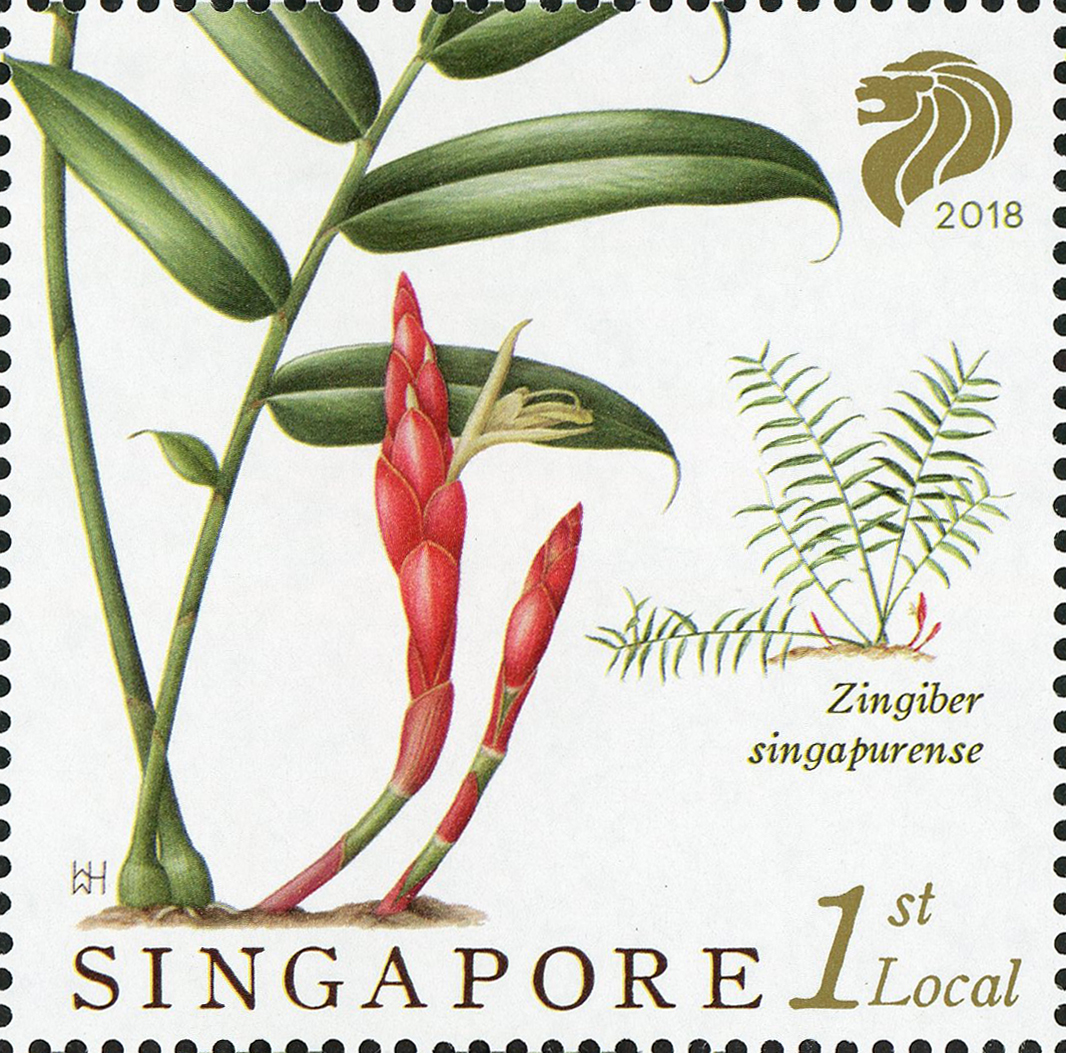
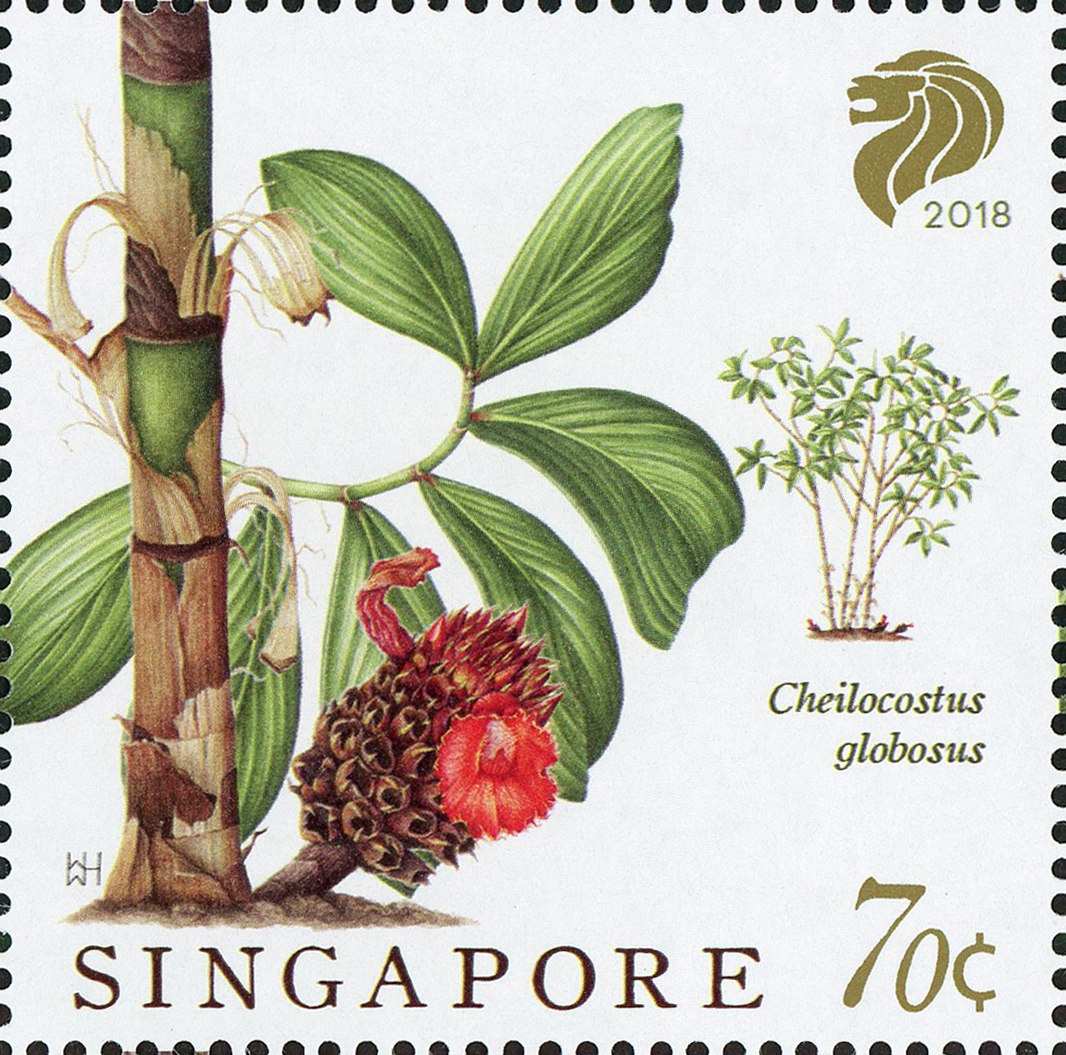
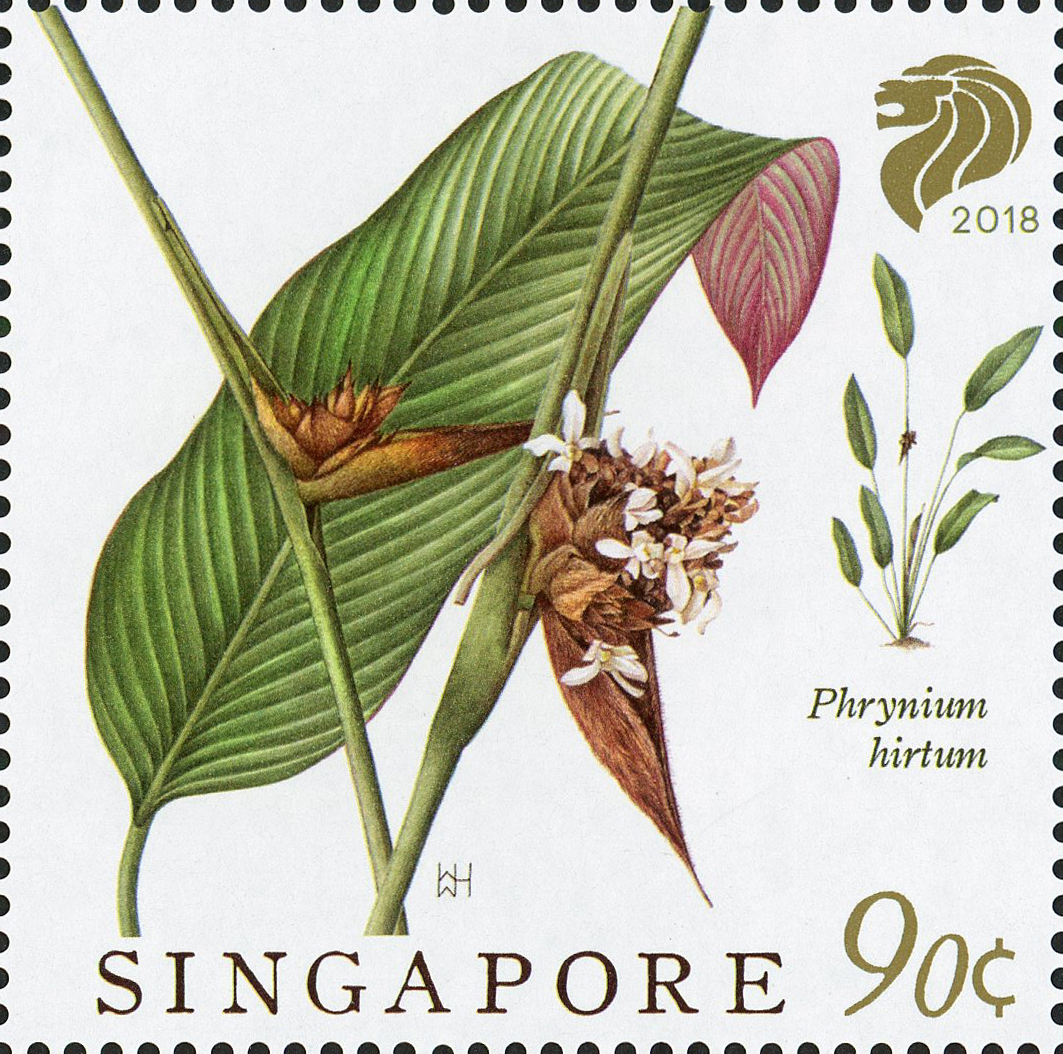
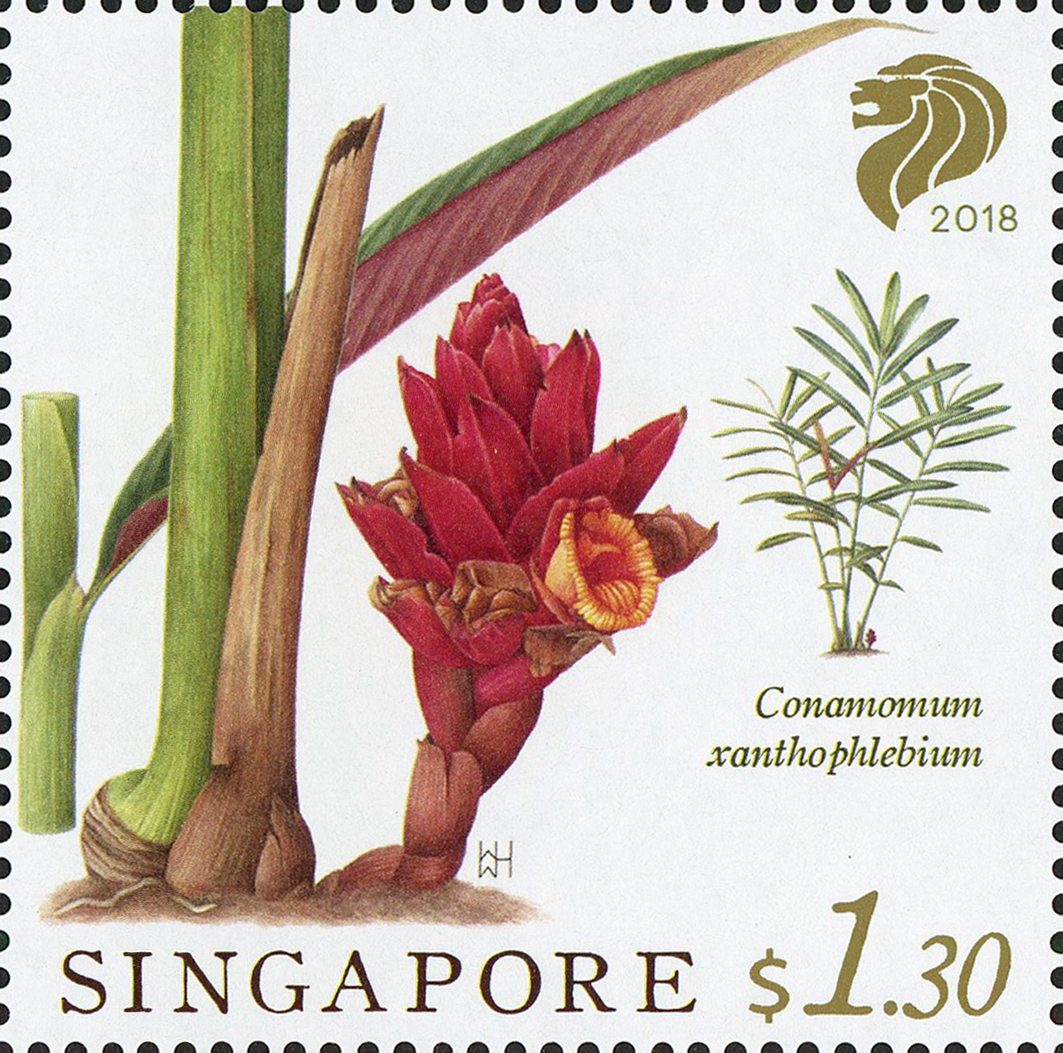
1st Local Stamp: Zingiber singapurense, the Singapore ginger, is a critically endangered plant species endemic to Singapore. Fewer than 50 mature plants are known to exist across three populations in the Central Catchment Nature Reserve. The plant thrives in moist, shady conditions within primary and mature secondary forests, and it flowers from May to June.
70¢ Stamp: Cheilocostus globosus is a native species that was once presumed to be extinct in Singapore but was rediscovered in 2012. It is easily propagated through stem cuttings and has been successfully reintroduced into various nature reserves and parks in Singapore. The spirally arranged, glossy leaves and orange, showy flowers make it ideal for landscaping use.
90¢ Stamp: Phrynium hirtum, is native to Southeast Asia but it was only recently discovered that it occurs in the wild in Singapore. As it is currently known from only a single population in one of the primary forest patches, it is classified as Critically Endangered. The young leaves have a dark purple-red tinge on the under-surface, making this plant potentially suitable as an ornamental for shady and moist areas.
$1.30 Stamp: Conamomum xanthophlebium is a handsome ginger species native to the region, found only in primary forests. The plant's leafy shoots can grow up to 5 meters, though in Singapore, they rarely exceed 3 meters. Its bright red flowers, which grow at ground level and are sometimes used in Malay curries, are easily overlooked. It can be found in forests such as the Bukit Timah Nature Reserve.











